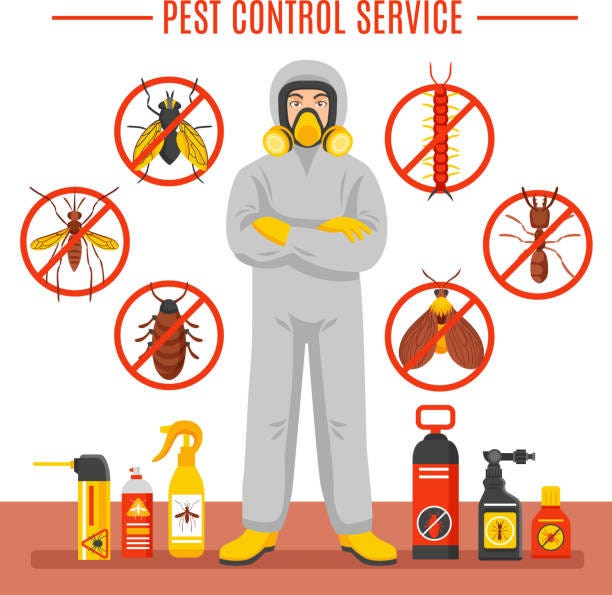Reliable A1 Bed Bug Exterminator Charlotte - Eliminate Bed Bugs Quick
Wiki Article
Bed Pest Treatment Malfunction: Comparing Chemical Vs. Non-Chemical Solutions
In the world of insect control, specifically when handling the consistent concern of bed insects, the choice in between chemical and non-chemical therapy services can be a crucial one. Both approaches provide distinctive advantages and downsides, affecting variables such as efficiency, safety factors to consider, and overall expense. By examining the nuanced details of each technique, a clearer understanding of which course to seek in addressing a bed bug problem can be obtained.Performance of Chemical Therapies
Chemical therapies for bed insect infestations have been extensively recognized for their potent and rapid effectiveness in getting rid of these pests. When taking into consideration the performance of chemical therapies, it is essential to recognize that they can offer a thorough and fast option to a bed pest issue. Expert pest control operators frequently count on pesticides to target bed insects at different stages of their life process, including grownups, eggs, and fairies. These chemicals commonly function by interfering with the bed bugs' anxious system, causing paralysis and eventual fatality.Additionally, chemical treatments have the benefit of using residual effects, indicating that they can continue to get rid of bed bugs also after the initial application. This recurring action is especially helpful in combating any possible re-infestations. Additionally, the quick action of chemical therapies can bring alleviation to individuals facing severe bed pest infestations, permitting them to gain back control of their home promptly.
Security Interest In Chemical Solutions
One crucial facet that calls for cautious factor to consider when utilizing chemical solutions for bed bug treatment is ensuring the safety of occupants and the atmosphere. Exposure to certain chemicals used in bed pest treatments can lead to respiratory system concerns, skin irritation, or other unfavorable responses, especially in individuals with pre-existing conditions or sensitivities.Moreover, the ecological influence of chemical options is another substantial consideration. Some chemicals used in bed pest treatments might be dangerous to beneficial pests, wild animals, and environments if they seep right into the soil or water supply. It is necessary to make use of chemical treatments judiciously, complying with safety and security guidelines, and taking into consideration less harmful alternatives to mitigate these threats and ensure the efficient and risk-free monitoring of bed bug invasions.
Benefits of Non-Chemical Strategies
Thinking about the potential safety issues and environmental impact related to chemical solutions for bed pest therapy, discovering non-chemical strategies provides a promising option with several unique advantages. Non-chemical methods offer look at more info a safer choice for families, particularly those with people, children, or pets sensitive to severe chemicals. These techniques eliminate the threats of direct exposure to harmful substances, minimizing the capacity for negative health results. In addition, non-chemical treatments are eco-friendly, as they do not add to air or water contamination, making them a lasting choice for bug control.Additionally, non-chemical services can be efficient in targeting bed bugs, consisting of hard-to-reach locations where chemical therapies may not penetrate - A1 exterminators charlotte nc. Approaches such as heat therapy, vacuuming, vapor cleansing, and mattress encasements supply comprehensive elimination without the usage of hazardous chemicals.
Limitations of Non-Chemical Treatments

Additionally, non-chemical therapies typically require several applications to achieve successful removal. This can be lengthy and might not always guarantee complete removal of all bed pests and their eggs, particularly in hard-to-reach or hidden places.
Furthermore, the success of non-chemical treatments heavily counts on proper implementation and thoroughness, which can be challenging for people without specialist know-how. Insufficient application of non-chemical methods may result in insufficient obliteration, resulting in persistent infestations and the need for added treatments.
Consequently, while non-chemical treatments have their advantages, it is vital to acknowledge these limitations and consider them when identifying one of the most effective strategy for taking care of bed insect problems.
Cost Comparison: Chemical Vs. Non-Chemical Options
Offered the constraints linked with non-chemical therapies, a vital aspect to assess in the context of bed pest monitoring is the price contrast in between chemical and non-chemical choices. In comparison, non-chemical treatments like warmth treatment helpful resources or steam can be a lot more pricey, with expenses varying from $1,000 to $6,000 for an entire home. While the preliminary expense of chemical therapies might appear lower, multiple treatments may be called for to fully remove the infestation, potentially enhancing the general cost.Final Thought

Taking into consideration the prospective safety and security problems and environmental effect connected with chemical services for bed insect therapy, exploring non-chemical approaches provides an encouraging alternative with several distinctive benefits.Given the restrictions connected with non-chemical treatments, a necessary facet to assess in the context of bed bug administration is the expense contrast in between chemical and non-chemical choices. In comparison, non-chemical treatments like warmth treatment or heavy steam can be extra pricey, with prices ranging from $1,000 to $6,000 for a whole home. While the first cost of chemical therapies may appear lower, several treatments may be called for to fully get rid of the infestation, potentially boosting hop over to these guys the general cost.In conclusion, when comparing chemical and non-chemical bed bug treatment options, it is vital to consider effectiveness, safety and security, benefits, limitations, and expense.
Report this wiki page